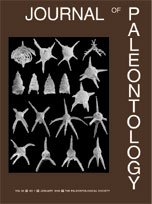Fossil carnivorans are described from earliest Eocene localities in the Clarks Fork and southern Bighorn basins of Wyoming. Three new species, Miacis rosei, Uintacyon gingerichi, and Vassacyon bowni, collected from the base of the Wasatchian North American Land Mammal Age (Wa-0), are the smallest and possibly most basal members of their respective genera, and increase from one to four the number of miacids known from this faunal zone. An upper dentition of Miacis deutschi from slightly younger (Wa-2) deposits is also described. Previously known only from lower teeth and a single M1, the specimen of M. deutschi includes the left P3-M2, alveoli for the canine, first two premolars and the last molar, as well as most of the maxilla. The new material helps fill gaps in our knowledge of the dental morphology of basal Miacidae and provides insight into the functional differences of the carnassial teeth in the diverging Uintacyon and Miacis lineages. It also provides an opportunity to further assess the hypothesis that climactic warming in the earliest Eocene resulted in evolutionary dwarfing of mammalian species; based on three criteria for identifying dwarfed species at least one of the new taxa, U. gingerichi, is consistent with this hypothesis.
How to translate text using browser tools
1 January 2008
Earliest Eocene Miacidae (Mammalia: Carnivora) from Northwestern Wyoming
Ronald E. Heinrich,
Suzanne G. Strait,
Peter Houde
ACCESS THE FULL ARTICLE

Journal of Paleontology
Vol. 82 • No. 1
January 2008
Vol. 82 • No. 1
January 2008




